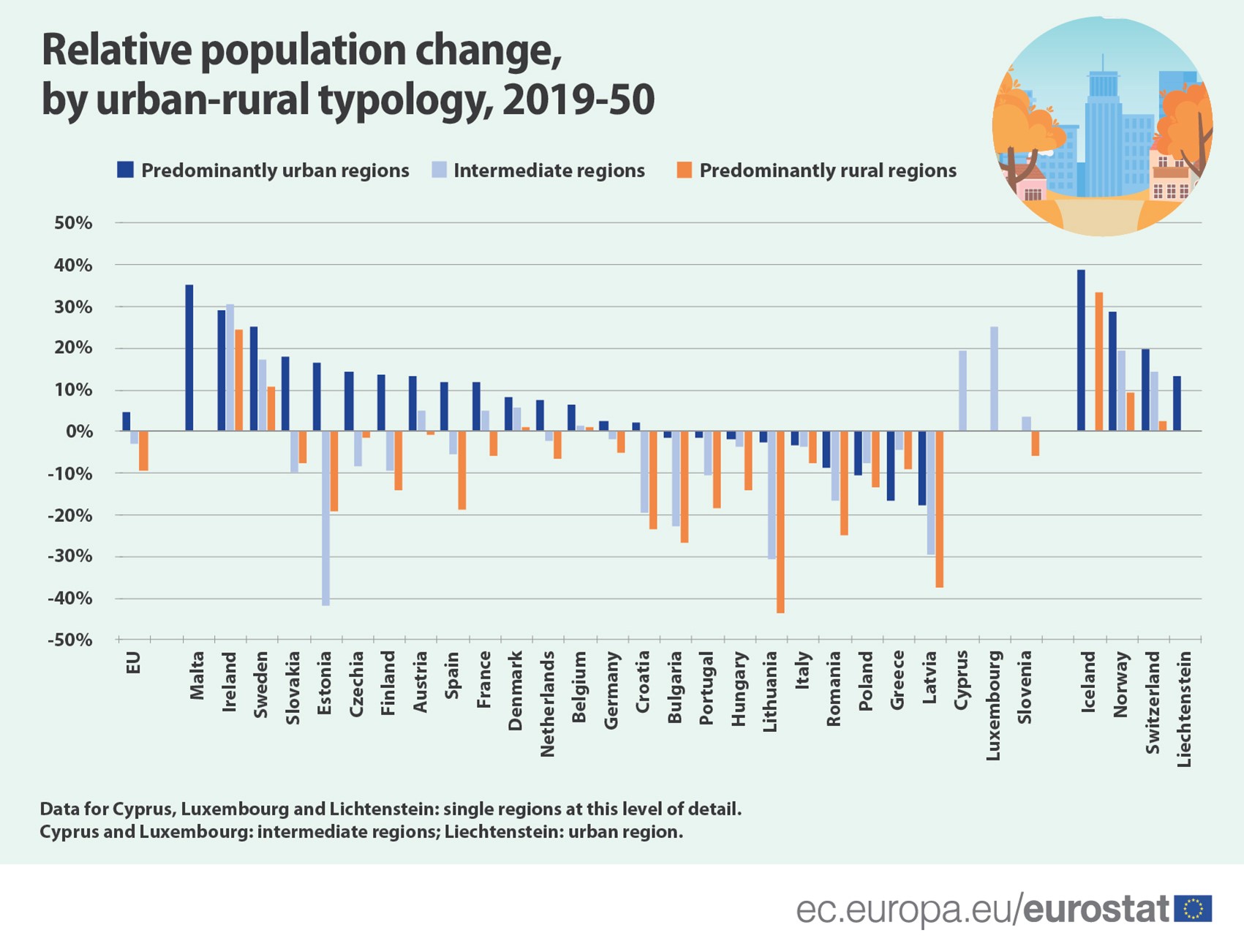
Populations are projected to grow in almost three out of five urban regions of the European Union (EU), whereas they are likely to shrink in four out of five rural regions by 2050.
Between 2019 and 2050, the overall urban population is projected to increase in 15 EU Member States, ranging from +2.3% in Croatia to +35.4% in Malta. Along with Malta, Ireland and Sweden are also projected to record increases of more than 20% in their overall urban populations (+29.2% and +25.1% respectively).
In contrast, the overall urban population is projected to decrease in nine EU Member States: Bulgaria (-1.4%), Portugal (-1.6%), Hungary (-1.7%), Lithuania (-2.7%), Italy (-3.1%), Romania (-8.6%), Poland (-10.3%), Greece (-16.7%) and Latvia (-17.7%).
Over the same period, the overall rural population is projected to increase in just four EU Member States: Ireland (+24.5%), Sweden (+10.9%), Denmark (+1.2%) and Belgium (+1.0%). At the other end of the scale, 20 Member States are projected to record declines in their overall rural populations, ranging from -43.5% in Lithuania to -0.6% in Austria. Significant declines of more than 20 % are also projected in Latvia’s rural population (-37.6%), as well as the rural populations in Bulgaria (-26.8%), Romania (-25.0%) and Croatia (-23.3%).